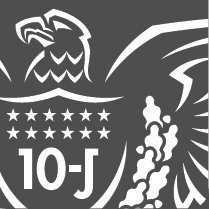District bank earnings performance declined notably in the fourth quarter (see Chart A6). Despite continued improvement in interest income, earnings were hindered by increased interest expenses, overhead costs, provisions, and charge-offs, as well as reduced noninterest income (see Chart A4). Quarterly return on average assets (ROAA) totaled just 0.76 percent, the lowest since year-end 2011. The net interest margin (NIM) exceeds year-ago levels but remains below pre-pandemic averages as increases in funding costs continue to outpace gains in interest income (see Chart A11). District banks saw smaller increases in yields on earning assets—both loans and securities—compared to larger banks nationwide. Noninterest income dropped to a record low of 0.91 percent year-to-date (see Chart A15) as a result of continued pressure on gains on sale of loans, servicing fee income, and deposit service charges. Noninterest expenses also hindered earnings performance (see Chart A17), primarily driven by large FDIC assessment fees in the fourth quarter._ In addition, provision expenses and charge-offs increased to near or above pre-pandemic levels, further inhibiting net income (see Chart B3).
Balance sheets grew modestly during the quarter. Asset growth totaled 2.2 percent quarter-over-quarter and was primarily attributable to growth in loans, as well as increasing cash and due from balances (see Chart C3). Loan growth continues to outpace growth in liquid assets, which decreased further to 13.3 percent of total assets, a 15-year low (see Chart D9). Regional banks carry the lowest level of liquid assets, both across the District and nationwide. The liquid asset ratio declines to 5.3 percent when excluding securities, which continue to be hindered by unrealized losses. However, unrealized loss positions have improved as a result of market rate movements. Unrealized losses on securities equaled 21 percent of Tier 1 capital as of the fourth quarter, the lowest level since the onset of the tightening cycle in March 2022 (see Supplemental Chart 1).
Growth during the quarter was largely funded by deposits, particularly time deposits, (see Chart C3) while growth in other borrowings slowed (see Charts D10-D11). Core deposits, as defined in the Uniform Bank Performance Report (UBPR), increased for the first time since the first quarter of 2022, with growth seen in all major account types. Reliance on noncore funding stabilized in the latter half of the year but remains elevated at 16.2 percent of assets, up from 11.2 percent one year ago.
Regarding credit conditions, noncurrent loans, nonaccruals, and charge-offs have increased from prior-year lows but remain below pre-pandemic averages, with the exception of consumer loans (see Charts B5 and B8). In particular, consumer loans 30-89 days past due, as well as consumer nonaccrual loans, are elevated across District banks.
Endnotes
-
1
In addition to an increase in the initial base deposit insurance assessment rate, the FDIC also implemented a special assessment applicable to larger banks to recoup losses to the Deposit Insurance Fund (DIF) following the bank failures of 2023. Banks were to recognize the expense for the special assessment in 4Q, pursuant to accounting rules.
